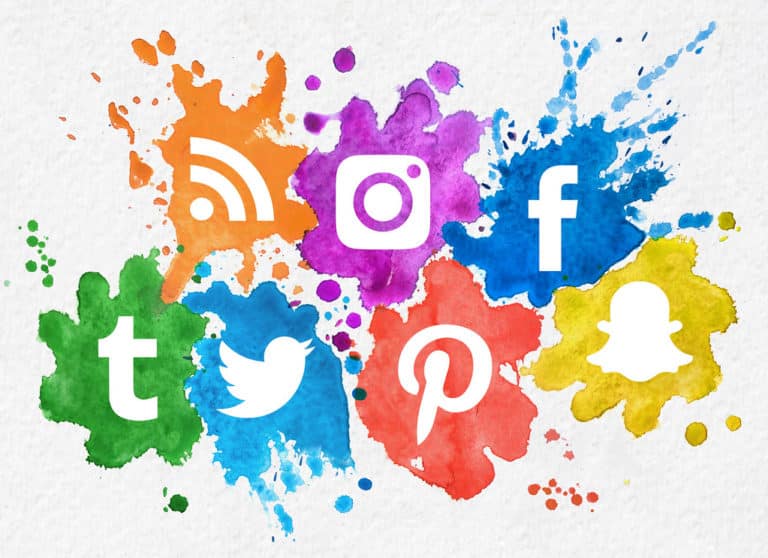
What is social media?
Social media is a collective term used for websites and applications that are used for communication. Here, people interact with each other on community-based input, share content, and even collaborate. Social media is mainly used by people to keep in touch with family, friends, and several communities.
In present times, when we think about social media, we hear about a lot of bad aspects of it. Is it true then?
Let’s look at all the angles related to social media and see how it affects our lives.
Investigate Social Media: What did the experts say?
It is true that much research in the field has shown many negative effects of using social media, mostly related to depression, self-harm, and loneliness. Contrary to that, there is other research that shows the exact opposite; many people have benefited from using social media. One thing is certain: social media has become an integral part of our lives and it is rapidly evolving in front of our eyes with the advancement of technology.

There are two types of users: active and passive.
The active users generally like, share, and post content and are mostly young adults or teenagers.
Passive users are generally people who lurk on social media and just watch other people’s content.
When social media came in 2005, only 5% of people in the U.S. used it, but in 2019 it was found that number went up to 70%. The Paw Research Centre did surveys to find out social media usage (early 2019 U.S. adults). The survey shocked the researchers. It was found out that teenagers between the ages of 13 and 18 years old used social media for an average of nine hours a day, and between the ages of 8 and 12, it was about six hours a day.

The Good:
Technology has made our lives easier and, with it, it is possible to stay in touch with our family and friends via text, email, FaceTime, etc. It gives us the advantage of accessing any information, and we can research. We can pay our bills, learn some new skills online, which helps us to improve our job skills, and we have endless hours of content regarding any genre. People organise fundraisers and are involved in social awareness and civic engagement. It is also a great marketing tool which helps a lot of businesses to sustain themselves, which creates job opportunities and even helps with remote employment.

The Bad:
The good is always accompanied by the bad. Even with all the benefits of social media, there are many potential issues. Social media isn’t itself bad, but how people tend to use it. Online people may act as friends, but in reality they might not actually be friends, which in turn can make a person anti-social in person. People are spending more time on social media, which exposes them to more negative aspects such as cyberbullying, depression, social anxiety, and, of course, exposure to adult content that is inappropriate for children. Social media has become an addiction for people, and they waste a lot of their time there. People are not focusing on the important factors, their responsibilities.
Whenever we do something we like, our brain releases dopamine, which makes us want to do that thing over and over again. When our post gets more views or likes in our photos, people subconsciously view it as a reward and try to repeat this action in hopes of getting their dopamine hit.
As the name suggests, people will sometimes pick up their phones for no reason so as not to miss out on anything. This is very bad for our mental health, and excessive use can lead to cognitive decline.
Social media has become a trend where people compare themselves with each other, always trying to get as much attention as they can from other people online. This has led to many people developing unhealthy body images just to gain confidence and attention. People value their worth by their looks and how many likes they get on social media. Selfieholics are the people who are most vulnerable to this.

The Ugly:
Just like technology, bullying has also evolved. It is not only outside, but it has also reached the comfort of our homes. Cyberbullying has become a more constant and ever-present threat. Cyberbullying means using technology or any other electronic communication to harass, harm, or frighten, especially by sending unpleasant messages to others using the internet. Teenagers typically do it.
One study has shown that nine out of ten LGBTQ students experience bullying at school or online. Biracial children are more likely to get bullied than single-race children. People who are gay, obese or have disabilities are more likely to get bullied than other children. There are millions of children who, on any given day, stay at home due to fear of being bullied.
Suicide is among the leading causes of death of children under the age of 14. Many young people die by hanging themselves. According to the American Association of Suicidology, suicide rates between the ages of 10 and 14 have gone up by more than 50% over the last four decades.

What can be done?
Well, for parents, to improve their child’s life online and in real life is to replicate or set an example of behaviour that they as people want to see. When their child gets their first phone, they should immediately set healthy boundaries so as to protect their mental as well as physical health. Parents should try to have a long conversation with their children about social media’s pros and cons and lead them down a better path before they do something that they shouldn’t do. Parents should try to take time for their children so that they don’t become isolated. There should be more face-to-face interaction so that they can become socially adept. Finally, they shouldn’t give lectures but try to have genuine conversations.













